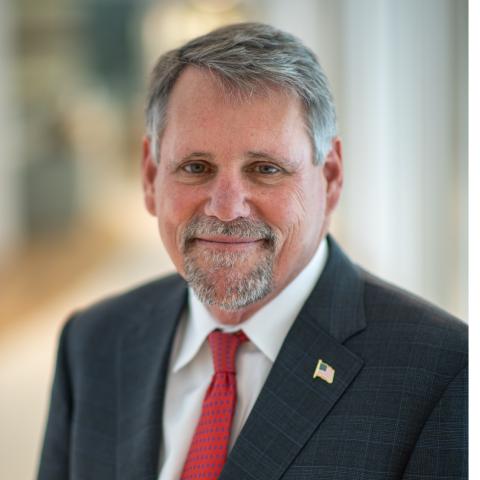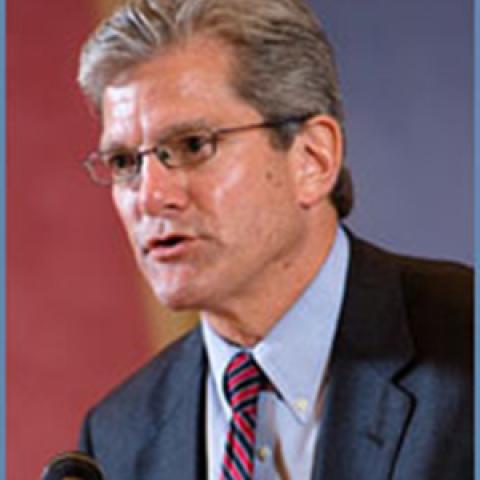NOTE: The article drew a response from Eugene Tempel, executive director of the Center on Philanthropy at Indiana University, in the January/February 2004 issue of Philanthropy. Tempel wrote, Schambra is correct that substantial tensions exist in the sector between the quest for efficiency and professionalism on the one hand (which he sees as represented by nonprofit management education) and the irreplaceable benefits of grassroots pluralism on the other. Tempel goes on, however, to make the case that philanthropy needs to be professionalized, perhaps for nonprofits very survival. [T]he environment in which even the smallest volunteer-run organizations operate is growing increasingly complex . Our goal is ultimately, to increase nonprofits chances of surviving and succeeding.
With the launching of the nations first Ph.D. program in philanthropic studies at Indiana University, the study of American giving and volunteering seems to have come a long way from Alexis de Tocquevilles seemingly amateurish study Democracy in America, now over 170 years old. But has it?
Most professors would chuckle, for instance, if you suggested that Alexis de Tocqueville still has something to tell us about America. Tocqueville's Democracy in America, an account of his travels through our young republic in the 1830s, said that the secret to American democracy was the ability and willingness of everyday citizens to step forward and manage their own public affairs through small, private civic organizations and local governments. By contrast, he observed, citizens in Old Europe simply waited passively for the government to solve their problems. Today many Americans, especially academics, dismiss this understanding of democracy as archaic. The conventional wisdom holds that the small, self-governing associations of a century ago have long since been replaced by vast, well-funded foundations and nonprofits, managed by meticulously trained experts with imposing professional degrees.
Indeed, the academic production line for foundation and nonprofit management professionals seems to have been put on three shifts. As Seton Hall professor Naomi Wish puts it, nonprofit studies is "one of the fastest growing fields in academia." She and collaborator Roseanne Mirabella note that in 1990, only 17 universities offered a graduate concentration (three courses or more) in the management of nonprofit organizations. By 2001, that number had exploded to 97, with some 242 institutions offering courses in nonprofit management. To meet classroom demand, several publishers now churn out whole series dedicated to the field, which also boasts three major scholarly journals. Several scholarly associations in the area have sprung up, with the Association for Research on Nonprofit Organizations and Voluntary Action boasting over 1,200 members. Thirty-eight of the academic centers for nonprofit management have even formed their own trade association, the Nonprofit Academic Centers Council.
Why the surge in nonprofit management education? Some scholars suggest it's simply a function of the tremendous growth in foundations and nonprofits over the past several decades, requiring ever more trained grantors and grantees. But Harvard scholars Peter Frumkin and Peter Dobkin Hall point to an earlier stimulus: the Tax Reform Act of 1969. Deeply alarmed by this federal regulatory incursion into their field, which established a pay-out requirement, excise tax, restrictions on self-dealing, and other regulations, foundations and nonprofits decided to define and assert themselves more vigorously.
They boldly proclaimed themselves to be a sector distinct from government and business, with their own unique, indispensable contribution to be made to the republican "Independent Sector," as one of its new trade associations was called. The first order of business for this newly defined sector was to explain and rationalize itself to an evidently skeptical government and general public. So Independent Sector and its allies were soon engaged in cultivating studies of the nonprofit realm's extent and operations through an annual research forum, closer relationships with academic associations, and above all, the propagation of scores of new centers for nonprofit management education at universities around the country.
These centers, Frumkin suggests, meet the need for professionally certified administrators to fill burgeoning foundation and nonprofit staffs, as the sector moves toward ever more sophisticated, bureaucratic, rationalized, and hence publicly defensible operating procedures. Hall adds that the major foundations--gun-shy about nonprofit scholarship prior to the 1960s because it had been largely negative and sensationalist--today are enthusiastic supporters, indeed, often founders, of the centers. Hall maintains, however, that the large foundations carefully police the studies therein, assuring they are narrowly focused on "useful" technical training, and keep away from nettlesome "theoretical" questions about the larger purposes and political contexts of philanthropy--to say nothing of "critical scholarship [that] would kindle further episodes of 'regulatory enthusiasm'" from the likes of Congress.
Since nonprofit management education was originally intended to produce operators and apologists for the complex, bureaucratic institutions that characterize the sector today, small wonder it finds itself perched somewhat uncomfortably between technical training and genuine scholarship, struggling to do either task well. As a training program located at a university, it is open to the inevitable charge of being detached from the real world--a world in which, as grassroots scholar David Horton Smith points out, small, informal organizations may occupy as much as 90 percent of the territory, a vast realm of uncharted "dark matter" within civil society where formal academic training is far less useful than practical experience and wisdom. Noted community activist Pablo Eisenberg complained in the Chronicle of Philanthropy several years ago that the nonprofit centers are "not as productive or as rooted in reality as they should be" due to the "absence of outstanding nonprofit executives, either in residence or as adjunct faculty members."
My acquaintance with battle-tested grassroots nonprofit leaders confirms that few would be tempted to take time from already brutal work schedules to sit in on college courses--courses that they should be teaching themselves, as Eisenberg points out. Sadly, the foundations funding the centers may now be tempted to pump up demand for them by strongly implying that only academically credentialed nonprofit leaders need apply for foundation support. (This wouldn't be the first time an effort to improve and professionalize the field becomes simply another barrier to funding for smaller nonprofits.)
Mirabella and Wish, Lester Salamon, and others point to another way today's training programs fail to prepare nonprofit managers for the real world. Because most of their focus is on teaching "inside functions," such as management skills, finance, and human resource development, their graduates are ill-prepared to step into organizations whose fates are tightly interwoven with "outside" forces, especially government, which has become the chief financier of many nonprofits. Over-correction in this direction, however, will leave nonprofit education open to the charge of being classrooms for Big Government advocacy and ideological activism. The director of the new nonprofit center at North Carolina State University, for instance, makes clear that a priority for his center will be to challenge the host state's failure to maintain an acceptable level of social programming: "It's not that government can't do it, it's that they won't do it. It's the nonprofit community that needs to hold our elected officials accountable."
It's the bid by nonprofit studies to be legitimately academic, however, that has attracted far more skepticism, verging at times on ridicule. "Pure" academics working within the established disciplines generally regard the product of nonprofit centers as something considerably less than genuine scholarship. Charity, Philanthropy, and Civility in American History, a major new collection of essays edited by Lawrence Friedman and Mark Garvie, notes that professional historians have been reluctant to write about the independent sector "for fear of connections with amateurs," which "seems to have given no few amateurs freedom to engage the past immune from sufficient scholarly responsibility." Peter Dobkin Hall points out that when "civil society" emerged in the mid-1990s as a topic of interest for mainstream scholars such as Robert Putnam and Theda Skocpol, they "entirely ignored the by-then substantial body of work produced by self-identified nonprofit scholars." Another major new collection of essays, Ellen Lagemann's Philanthropic Foundations, brushes quickly past prior "in-house" scholarship on foundations: "Boring to read and insignificant in the insight offered . . . foundation histories of this sort provided a false fa?ade behind which trustees and foundation officers and staff could feel securely proud of their apparently altruistic, apolitical contributions to knowledge, culture, or humankind."
It's unlikely Indiana University's new Ph.D. program will do much to improve the field's academic standing. Given the host's strong tradition of teaching the "why" as well as the "how" of giving, it's less likely than other programs to become mired in sterile technique. But several discipline-based scholars with whom I've discussed this development insist that although earning the degree might improve a mid-career foundation official's chances for promotion, it will never be considered a genuine scholarly achievement.
The low esteem in which nonprofit scholarship is held has not helped the new centers as they struggle for elbow room within the university's brutally competitive institutional structure. As nonprofit management professor and former ARNOVA president Dennis Young puts it, they must "deal directly, and on uneven terms, with powerful, largely indifferent, and sometimes antagonistic internal university interests, especially university administration, and deans and host faculties of various traditional schools and departments." Nonprofit centers have had a difficult time attracting long-term "hard" funding for endowed chairs or full-time academic positions within the universities, leaving them dependent on the "soft" short-term outside funding from private foundations that made their work suspect in the first place.
Now even the short-term funds are drying up. Atlantic Philanthropies, which contributed $15 million in 2000 to nonprofit research, announced in 2001 that it was abandoning the field altogether. The Packard Foundation's substantial commitment through its Organizational Effectiveness and Philanthropy program plunged from $32 million in 2001 to $13.6 million in 2002, followed this year by the program's demise. Already, some of the more established and reputable programs like Yale's Program on Nonprofit Organizations and the Aspen Institute's Nonprofit Sector Research Fund are struggling for footing in this endowment-diminished era.
This gives us an opportunity to put into perspective the trend toward professionalization within the third sector, and to remind ourselves that it does not come without a price. While no one opposes skilled management of nonprofits, it would be tragic were everyday Americans to lose the desire or ability to found and manage--however clumsily--civic associations on their own, without hiring professional help. For it remains true today, as it was in Tocqueville's time, that establishing and running small grassroots groups is still the best way for a free people to acquire the critical democratic art of self-governance. When donors feel inclined to become impatient with the bumbling, halting, amateurish way some of their smaller, nonstaffed grantees go about their business, they should remember that they are witnessing and supporting the indispensable democratic process of citizens' learning how to govern themselves. No increase in managerial professionalism could substitute for that great contribution to the American republic.











